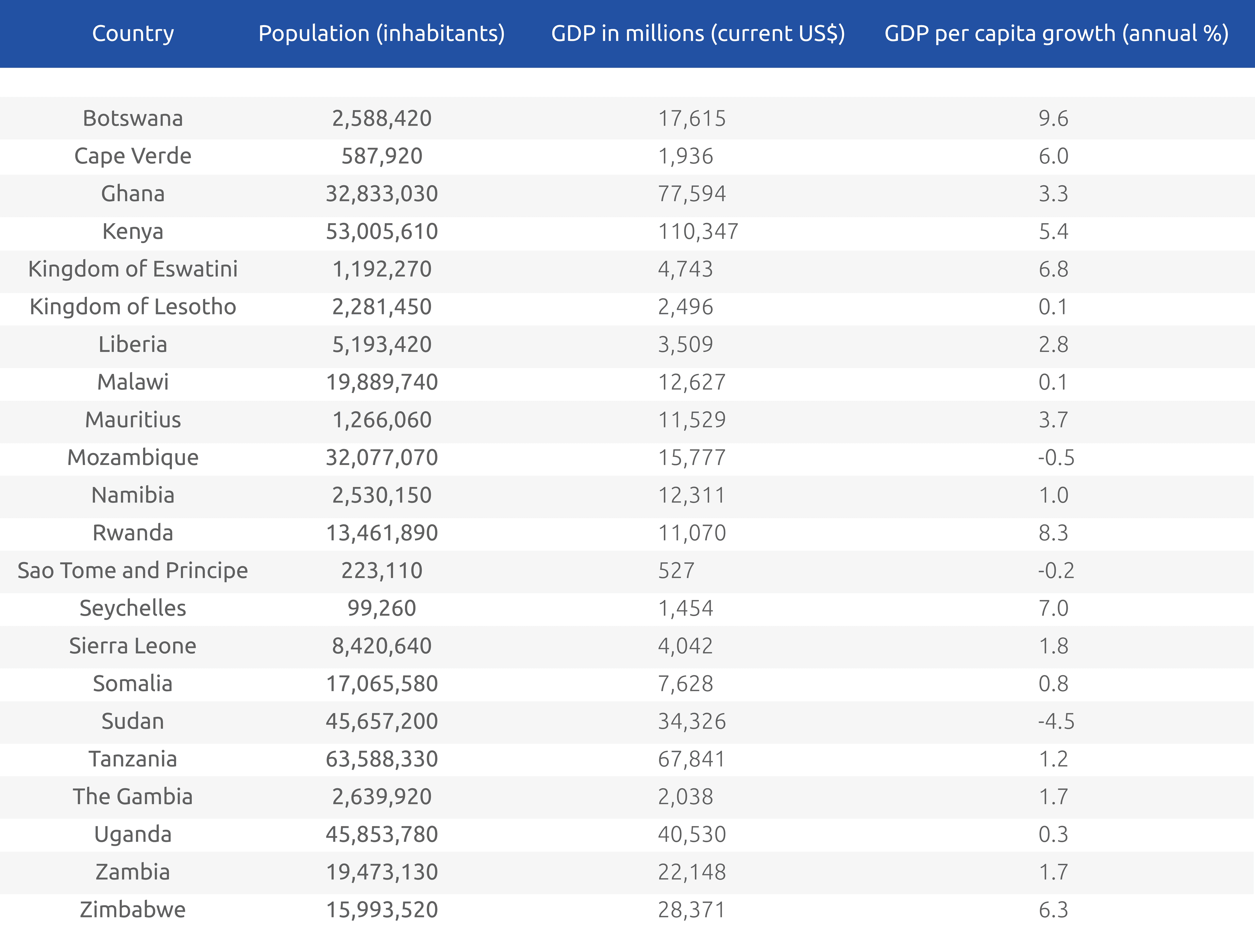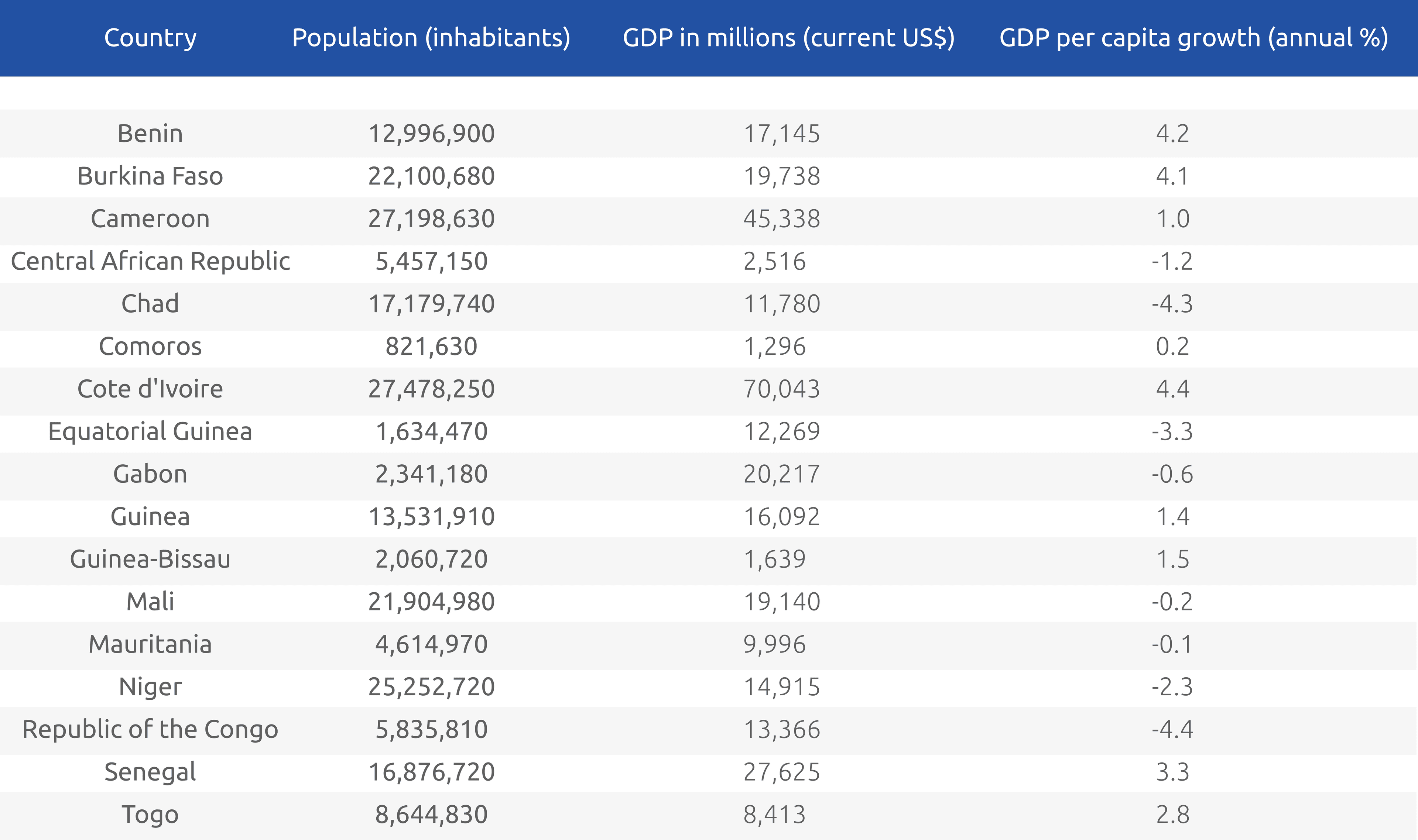
Using the African Regional Patent Offices to seek protection in enlarged markets

Introduction
Africa has two Regional Patent Offices, the African Regional Intellectual Property Organization (ARIPO) and the African Intellectual Property Organization (OAPI) which may provide access to patent protection in a significant set of countries in Sub-Saharan Africa.
ARIPO (African Regional Intellectual Property Organization) is an intergovernmental organization with 22 member states, in what patent refers, including Botswana, Cape Verde, Eswatini, Gambia, Ghana, Kenya, Lesotho, Liberia, Malawi, Mozambique, Namibia, Rwanda, São Tomé and Príncipe, Seychelles, Sierra Leone, Sudan, Tanzania, Uganda, Zambia and Zimbabwe. ARIPO promotes developing and using intellectual property (IP) in Africa through a centralized registration and administration system.
The African Intellectual Property Organization (OAPI) is an intergovernmental organization that provides IP services for its 17 member states, including Benin, Burkina Faso, Cameroon, Central African Republic, Chad, Comoros, Congo, Ivory Coast, Equatorial Guinea, Gabon, Guinea, Guinea-Bissau, Mali, Mauritania, Niger, Senegal, and Togo.
This study aims to provide information about the prosecution of a patent application in each one of these two regional patent offices, and how they may provide practical ways to use the patent system in Africa, mitigating the burdensome acts and high costs of filing several patent independent applications in a plurality of countries. Furthermore, some populational and economic indicators referring to the respective State Members are presented, which may guide the applicants to select and prioritize the respective countries to accomplish their market strategies regarding patent protection for their products and processes.
Some features regarding the prosecution in ARIPO
When filing a patent application before ARIPO, the applicant must select the designated Members States and file a specification in English. ARIPO patent applications are formally and substantively reviewed by ARIPO examiners and are granted and effective in the designated member states with the legal enforceability of the respective national law. ARIPO maintains a searchable database on the internet comprising information regarding bibliographic data of patent applications, besides their legal status. ARIPO also publishes detailed guidelines for examination.
Where the ARIPO Office decides to grant the patent, the published decision is communicated to the applicant and to the National Industrial Property Offices (NIPO) of each designated State. From this communication on, Member States have six months to issue a written communication informing ARIPO that the patent shall have no effect in that member state considering at least one of the following reasons:
- that the invention is not patentable by the provisions of the Harare Protocol, which comprises the provisions about the patentability requirements.
- that, because of the nature of the invention, a patent cannot be registered or granted or has no effect under the national law of that State.
The first reason may be related to a disagreement between ARIPO and a NIPO about the acknowledgement that the invention is novel and inventive, although NIPOs do not perform further substantive examinations. The second reason may be related to discrepancies between the definitions of exclusions from patentability in the Harare Protocol on Patents, which comprise the legal provisions followed by ARIPO, and the National Patent Laws. Of course, the two reasons above mentioned during the pos-granting process may arise some uncertainty about the decision taken by ARIPO, because any Designate State Member can refuse a granting decision taken by ARIPO.
Despite these uncertainties, ARIPO has another advantage, namely when compared to the prosecution of a patent application in the European Patent Office (EPO), which is the absence of procedures equivalent to the validations of European patents. The procedures post-grant before ARIPO are quite simpler than before EPO, being unnecessary to provide further translations of the patent and pay renewal fees to each one of the NIPOs, as the annuities are paid directly to ARIPO.
Some features regarding the prosecution in OAPI
The operating procedures and rules that must be followed when filing a patent application before OAPI are defined in the Agreement Revising the Bangui Agreement of March 2, 1977, of February 24, 1999. Despite this Agreement presenting a provision regarding the substantive examination in Article 8, this procedure has not been put in force yet by OAPI. Anyway, in contrast to ARIPO, the most distinctive characteristic, and advantage of OAPI is that a single patent registration, wherein the specification is filed in French, is automatically effective in all its member-states, without the possibility of designating only some countries. The automatic registration of a patent granted by OAPI to all Member States is also based on a lack of National Patent Laws among said Member States. On the other hand, the practical absence of a substantive examination may result in a subject matter protected in the countries covered by OAPI, that might be deprived, for instance, of novelty, when considering the work carried out by other Patent Offices during the examination of correspondent patent applications, which would be easily identified and rectified, if the substantive examination was ongoing.
Populational and Economic Indicators
Table 1 presents data referring to the population and selected economic indicators from each one of the ARIPO’s State Members and Table 2 presents similar results regarding the State Members comprised in OAPI. The data were retrieved from the World Bank Data Base.
Table 1*

Table 2*

(*) Cells shaded means: Blue - countries having a GDP per capita growth superior to the World average value; Green - countries having a GDP per capita growth superior to the GDP per capita growth of the Sub-Saharan Africa average value; Orange colour - countries having a negative GDP per capita growth.
The countries covered by ARIPO have a population of more than 385 million inhabitants, which corresponds to 33% of the overall population of Sub-Saharan Africa. If we add the more than 215 million of inhabitants of the State Members of OAPI, we may compute that the countries covered by the two Regional Patent Offices have about 50% of the population of Sub-Saharan Africa.
The GDP per capita growth of Sub-Saharan Africa is 1.5% and the corresponding most recent value for the World is 5.0%, according to data provided by World Bank Data Base. Considering the geographic coverage of ARIPO, it is possible to observe that seven countries have a better performance than the world average according to this indicator, including countries that have relatively high populations, such as Kenya, Zimbabwe, and Rwanda. We shall also highlight the results of Zambia and Ghana, which are populated countries growing faster than the average value of Sub-Saharan Africa. There are no countries covered by OAPI that have a GDP per capita growth superior to the world growth rate, but it is possible to point out fairly good results for Benin, Burkina Faso, Cote d’Ivoire, and Senegal, which are growing faster than the average value of Sub-Saharan Africa. On the other hand, nearly 50% of the OAPI’s countries are facing retractions in the Economy, when we evaluate the GDP per capita growth indicator.
According to the Regional Economic Outlook of Sub-Saharan Africa in 2022, published by the International Monetary Fund, the economic recovery in sub-Saharan Africa has been marked by progress followed by some retractions in economic growth. The economic recovery is expected to accelerate in 2023, with growth trending at about 4 % over the medium term. This region of the world still fights economic and social issues resulting from the COVID-19 pandemic crisis. Furthermore, the war in Ukraine has been causing increases in the inflation rates in many countries, promoted by the food and energy markets. This study points out some measures that may help Sub-Saharan Africa to overcome these contractions, namely promoting economic diversification, and leveraging the potential of the private sector, wherein a successful implementation of the African Continental Free Trade Area would greatly boost regional growth and competitiveness.
Conclusions
The Regional Patent Office ARIPO may provide access to several markets in Africa, avoiding that applicants must file patent applications in a panoply of different countries. In the case of OAPI, one must bear in mind that this Regional Patent Office is the only way to obtain enforcement by a patent in the signatory countries.
The two regional Patent Offices encompass about 600 million inhabitants, which consist of a huge market, even considering that several countries are facing economic crisis due to the COVID-19 pandemic’s social and economic legacy, and the Russian invasion of Ukraine. Anyway, Sub-Saharan Africa is facing several economic challenges, and, both African Regional Patent Offices may contribute positively to boosting innovation in this part of the World, providing effective ways to protect an invention by a patent in several countries using a single filing, with reduced costs to the applicants, foreign and resident ones.
This article was originally published in IPR Daily.





